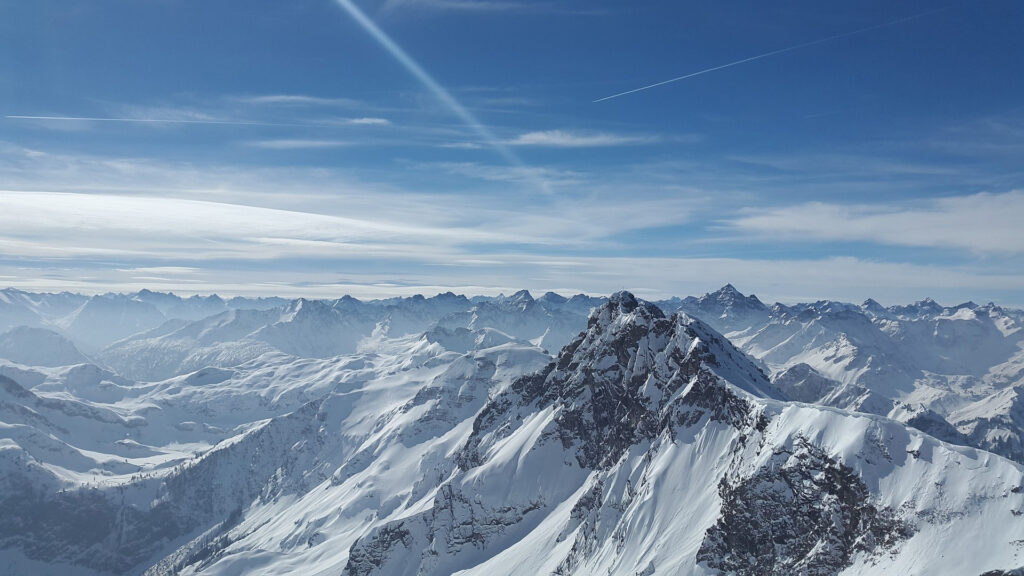There’s been a long-running debate in Earth sciences over whether mountains are a source of carbon dioxide or if they remove carbon dioxide from the atmosphere through mineral weathering. A new study has found that mountains can be sources or sinks and has identified the tipping point at which they switch from one to the other.
The study — by Ludwig Maximilian University of Munich, Colorado State University and the German Research Centre for Geosciences — found that many mountains exist on a spectrum of removing or releasing carbon, and erosion rates determine the impact of mountains on climate. The research, published in Science, helps to clarify a wide range of observations that alternately suggested mountains were a source of carbon dioxide or a sink, absorbing more carbon dioxide from the air than they release.
The study’s authors calculated that the optimal erosion rate at which carbon dioxide removal due to mineral weathering is maximized to be approximately 0.1 millimeter per year – a moderate rate. Higher erosion rates convert mountains to a source, and lower rates have no effect on carbon storage.
“Whether a mountain range is a source or sink of carbon dioxide depends on how fast the landscape is eroding,” said Jeremy Rugenstein, a CSU assistant professor of geosciences and co-author of the study.
The balance between erosion and uplift – the pace at which rock is being replaced through mountain formation – determines how long material sits at the surface. At high erosion rates, the minerals that remove carbon dioxide are stripped from the mountain before they have a chance to weather through exposure to water and wind. At these high erosion rates, the minerals that release carbon dioxide weather rapidly, overwhelming the effect from minerals that remove carbon dioxide.
Conversely, at low erosion rates, the minerals needed to remove carbon dioxide through weathering have been depleted and do not impact climate. However, at moderate erosion rates, minerals that remove carbon dioxide are exposed long enough for the necessary chemical reactions to occur.
“It’s only at these intermediate Goldilocks zones where erosion is fast enough that new minerals are coming up, but not so fast that they’re just getting swept away, and they have time to weather in situ and draw down CO2,” Rugenstein said. “That this Goldilocks zone occurs at such low erosion rates was a real surprise. Prior to this work, I might have guessed that such a switch from carbon dioxide sink to source — if it occurred at all — would be at a substantially higher erosion rate.”
For this reason, lower-relief mountain ranges, which are often older and less active, exhibited optimal erosion rates. Higher mountains with faster erosion rates are carbon sources.
The study examined metasedimentary mountains – where sediments are compressed and uplifted by tectonic activity – in different climates and across various erosion rates. Ranges as diverse as the Southern Alps in New Zealand, Central Mountain Range in Taiwan and eastern Tibetan Plateau in China all showed similar behavior at the same erosion rates, switching to a source of carbon at erosion rates higher than the optimal.
Rugenstein said the next step will be to test mountains composed of different types of rock. Preliminary data indicates that mountains made of granite, like those in the Rocky Mountains, might have a similar optimal erosion rate that maximizes the removal of carbon dioxide from the atmosphere.
Bigger picture and longer timeline
The study notes that including mountain basins could change the carbon accounting because rock eroded off mountains might continue to weather after it is relocated, sequestering carbon dioxide in the floodplain. So, while a fast-eroding mountain might be a carbon source, its basin might be a sink. The authors said more study is needed to piece together the bigger picture.
Over the course of a mountain’s life, it evolves from a low rate of erosion to faster erosion as it becomes more active and then returns to low erosion as activity slows.
“Mountains might evolve through this cycle where they are transiently sinks of carbon dioxide and then sources of carbon dioxide,” Rugenstein said.
The authors of the study — Rugenstein, Ludwig Maximilian University geologist Aaron Bufe and Niels Hovius from the German Research Centre for Geosciences — are investigating how mountains contribute to the long-term dynamics that drive climate and influence global temperatures.
“Over geological timescales, the temperature to which Earth’s ‘thermostat’ is set depends strongly on the global distribution of erosion rates,” Aaron Bufe, the lead author, said in a press release from the university.
